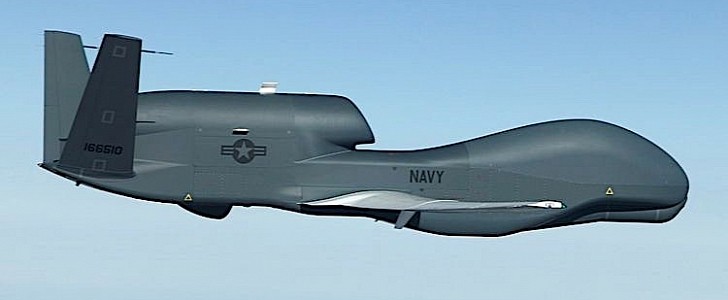In 2009, defense contractor Northrop Grumman deployed the Broad Area Maritime Surveillance—Demonstrator (BAMS-D). It was a drone meant to prove the advantages of such devices for military operations in a 6-month demonstration run. Twelve years have passed since, and the machine is still performing missions.
BAMS-D is an autonomous high-altitude, long-endurance (HALE) drone meant for maritime and littoral intelligence, surveillance and reconnaissance missions. Powered by a Rolls-Royce turbofan engine, it can cruise at a maximum of 60,000 feet (18,288 meters), spying on people.
If it looks familiar, that’s because the BAMS-D is the precursor of the MQ-4C Triton, a machine already in early operating capability deployment and one that will eventually become a 68-unit strong fleet, deployed with the U.S. Navy.
But back to the original BAMS-D, this drone has been in operation well beyond its initially planned life. This week, Northrop Grumman announced that the drone just passed the 40,000 flight hours milestone while on a mission for the U.S. Central Command (USCENTCOM) back in April.
For now, says the manufacturer, this particular drone will remain in operational service. It will continue to fly high in the sky for long periods, gathering sensible data about America’s enemies.
As for the Triton variant, it had its first flight in 2013. The U.S. Navy and the Royal Australian Air Force presently deploy a small number of them to conduct maritime ISR patrol, signals intelligence, search and rescue, and communications relay missions.
Just like its predecessor, it can stay in the air for 24 hours at a time, reaching altitudes of more than 10 miles (16 km). The drone can cover distances of up to 9,400 miles (15,100 km) on a single outing.
Earlier in May, Northrop Grumman announced it would begin testing a sense and avoid technology for the Triton, hoping to give it the capability of operating alongside other aircraft and from any airfield or airport in the world.
If it looks familiar, that’s because the BAMS-D is the precursor of the MQ-4C Triton, a machine already in early operating capability deployment and one that will eventually become a 68-unit strong fleet, deployed with the U.S. Navy.
But back to the original BAMS-D, this drone has been in operation well beyond its initially planned life. This week, Northrop Grumman announced that the drone just passed the 40,000 flight hours milestone while on a mission for the U.S. Central Command (USCENTCOM) back in April.
For now, says the manufacturer, this particular drone will remain in operational service. It will continue to fly high in the sky for long periods, gathering sensible data about America’s enemies.
As for the Triton variant, it had its first flight in 2013. The U.S. Navy and the Royal Australian Air Force presently deploy a small number of them to conduct maritime ISR patrol, signals intelligence, search and rescue, and communications relay missions.
Just like its predecessor, it can stay in the air for 24 hours at a time, reaching altitudes of more than 10 miles (16 km). The drone can cover distances of up to 9,400 miles (15,100 km) on a single outing.
Earlier in May, Northrop Grumman announced it would begin testing a sense and avoid technology for the Triton, hoping to give it the capability of operating alongside other aircraft and from any airfield or airport in the world.

